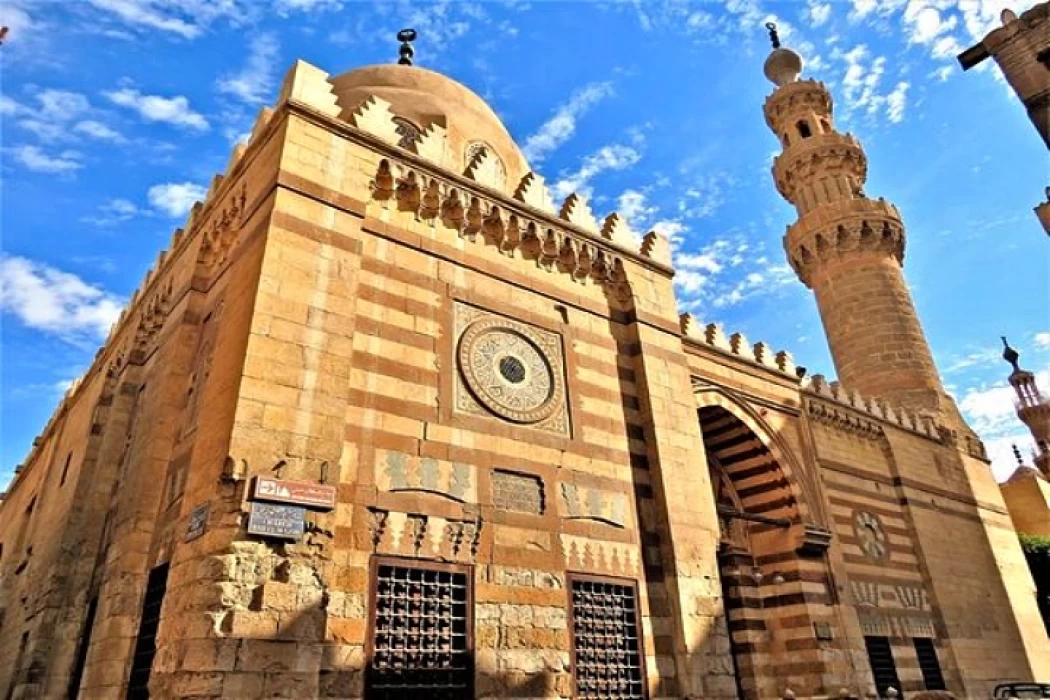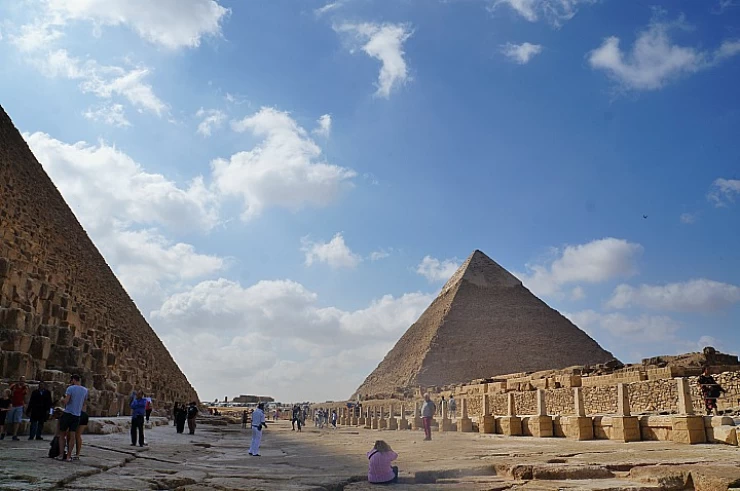
Mosque of Amir Aqsunqur
Mosque of Amir Aqsunqur
The mosque named “The Blue Mosque” is a pleasant decoration of the mosques in the Darb al-Ahmar neighborhood and because of this has 4 four other names called the Ibrahim Aga Mustafizan Mosque, Aq Sankar, al-Nour mosque and The Blue mosque which is how it is famously known to the local people.
It was established by Prince Aq Sankar Al-Salhadar a Mamluk who was the husband of Sultan Al Mansur Qalaun's daughter in 1347 and the husband of Sukayna Soudia. Mystery surrounds the design, construction, as well as the architect of the mosque, which still attracts a great awe factor due to its exquisite beauty and stylish features.
The mosque was severely neglected after the death of Aq Sangar and was almost abandoned by the people, but Prince Ibrahim Aga Mustafizan, one of the princes of the Ottoman Empire. The mosque was renovated and reconstructed using the same original design. He claimed to have had a dream in which he saw the Prophet Muhammad praying in his niche and advising him to restore it exactly as it was.
He oversaw the reconstruction and placed a blue faience, made specifically for it in Turkey from the Iznik region, in the qibla wall, giving it the name "Blue Mosque, praying in his niche, and advising him to restore it and restore it as it was, so he oversaw its reconstruction, and put in the qibla wall a blue faience made especially for it in Turkey from an area called Iznik, hence the name of the Blue Mosque.
The Blue Mosque is located on Bab al-Wazir Street, and it contains 3 mausoleums, including the mausoleum of Sultan Al-Ashraf Alaa al-Din Kajak, son of Sultan al-Nasser Muhammad bin Qalawun. The mosque features a southern wall with a central door leading to the Aq Sangar's mausoleum. The mosque has a large open central space which is surrounded by covered walkways on each side, the most prominent being the eastern qibla walkway which houses three entryways made of eight-sided textured stones quartered with red and white colors.
The entryways are decorated at the top with pointed arches patriotically colored in red and white ringing drums that are also hollow inside. The eastern portico has a colored marble pulpit whose sides are decorated with relief drawings of grape clusters and lush flowers, which is the oldest marble pulpit, and the minaret of the mosque is located on the western facade, which is a graceful minaret built of stone and consists of 3 floors.
















